To get through its greatest period of change, radio needs both digital innovation and distinctive content, Helen Boaden says.
How can we not only re-invent radio, but also stay relevant in the mind of today’s and tomorrow’s listener? During her keynote at Radiodays Europe 2014, the BBC radio director stated that despite all technological progress, human companionship and compelling content still make the difference for this broadcast medium. “Radio is essentially a relationship, with pleasure at its heart.”
“I’m not someone who believes that
radio is a version of the Titanic”
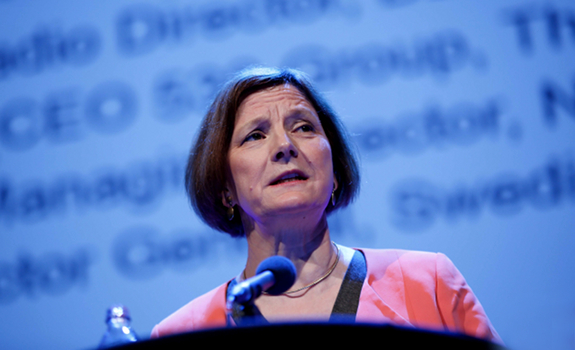
BBC radio director Helen Boaden is optimistic about the future of radio in a digital world (photo: Conor McCabe)
Expect listener behavior changes
“My deepest professional love” is how Helen Boaden calls the medium where she started her career, and to which she returned in April 2013 as Director of BBC Radio, after being Director of BBC News for 8 years. She feels like radio is in good creative shape, but there are challenges. “We are facing seismic shifts in deep-seated behavior that will, over time, fundamentally change our business.” Even though video didn’t kill the radio star, the industry should be prepared to take big and exciting, as well as difficult decisions. While UK radio is now reaching more people than ever, the average number of hours per listener per week steadily declines: “The trend is most acute amongst a young audience, where there’s been a fall of almost a quarter in average hours among 15-24 year-olds.”
Create customized, snackable content
For Boaden it’s evident that listener habits change across all demographics: “The growth of screens presents obvious challenges to a medium designed with listening, not looking, in mind.” She notes a decline of radio device sales with “a staggering 54 percent” in the UK since 2005. Meanwhile, smartphone, tablet and notebook sales grow, and consumers want media to deliver “bite-size, on demand content, free from context or linear scheduling”.
Bond with your audience
“The competition in audio has never been so intense”, Helen Boaden says in reference to platforms like YouTube and TuneIn. “Global tech giants are entering what always largely has been a fragmented, nation-based industry, some even having the temerity to adopt or adapt the word ‘radio’ as their own.” She refers to them as “iceberg challenges” which slowly come towards us and of which we see the top, not knowing how deep the problem may be. “But I’m not someone who believes that radio is a version of the Titanic. The unique strength of radio is its ability to respond creatively to new circumstances, and keep that one-to-one radio relationship at the heart of its offer.
“They haven’t given up on the listening;
they just want to watch as well.”

Young people (as well as older listeners) like to see video apart from (just) hearing audio (photo: stock image service)
Listen: curate listening habits
The BBC radio strategy is consisting of two parts. The first one is digital, based on the BBC Radio 1 slogan Listen, Watch, Share. While visual and social radio are great extensions of radio, Boaden feels like audio content will always remain to be “the heart and soul” of it. She finds it essential to preserve the habit of listening for all audiences and ages, and sees mobile audio as an opportunity. Since the BBC introduced podcasts in 2005, there has been a growing demand for downloadable audio. As of March 2014, over 40 million BBC Podcasts and Downloads are being downloaded every month, and around 4.4 million people had installed the BBC iPlayer Radio app for tablets and smartphones.
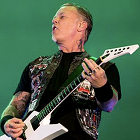 Watch: add compelling visuals
Watch: add compelling visuals
Helen Boaden sees visuals as part of radio’s future. The Glastonbury Festival 2013 was the first event to be comprehensively covered to allow audiences to hear and see content on demand on radio, TV & online. “All music festivals covered by the BBC since have shown a significant increase in streaming as people of all ages switch to video to see what previously they would only have heard. They haven’t given up on the listening; they just want to watch as well.”
Hire multimedia-skilled radio presenters
“We know that on Sunday night, when teenagers should be doing their homework, they are actually online, and eager to continue the fun of the weekend”, Boaden continues. BBC Radio 1 offers a live stream of a fully visualized weekend show by YouTube stars Dan and Phil, who had no traditional media experience when the station signed them up. She feels like “they have proven [to] maintain what makes our medium so special; that relationship with their audience, and enhance – not diminish – radio broadcasts with smart, engaging, simultaneous video content.” Evolving its popular iPlayer service, the BBC now has plans to give Radio 1 its own channel to provide short video content that isn’t broadcast on traditional television.
“Combine broadband and broadcast,
not one or the other”
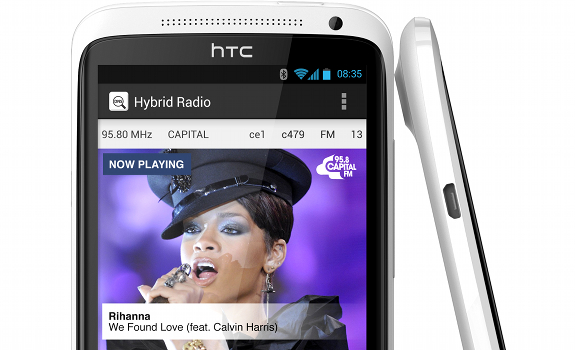
The BBC is lobbying with manufacturers to make mobile devices ready for hybrid radio apps (image: RadioDNS)
Share: make radio likeable
“Radio has always been the most participative, linear medium and it has moved quickly into social media environments. We are now using detailed audience data and social media insights to fully understand the content that users want at different times of the day and across the week”, Helen Boaden explains. While young audiences like shareable visuals on Fridays, on Mondays they rather want headline links to catch up on what they have missed over the weekend. Short-form content on the BBC Radio 1 website has proven to encourage sharing. BBC Radio 5 live offers news headlines with expert analysis as “snackable content” for “multi-device, time-poor audiences” who still want to get the important stories.
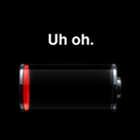 Lobby with technology companies
Lobby with technology companies
Drawbacks of smartphones and tablets are that batteries have limited power, buffering creates listening interruptions and streaming can be expensive. In alliance with other broadcasters, the BBC tries to encourage manufacturers to build smart, hybrid radios into their mobile devices, which can process FM, DAB, DAB+, DMB and HD Radio. In Boaden’s vision, companies should “combine broadband and broadcast, not one or the other”.
Keep your analog network
The British public broadcaster is working on innovations like a radio tag service where listeners with hybrid radios (FM and digital) that have an IP connection can add tracks and content to their favorites by pressing a button on their set. “That all sounds fantastically exciting and gives the feel that we’re moving forward”, Helen Boaden says, while also underlining the value of traditional radio: “We need to maintain a robust, free-to-air broadcast distribution backbone”. Looking ahead, the radio director sees a future for DAB in the UK as it accounts for “the line share of digital consumption”, now making up 24% of all hours and 65% of all digital hours, compared to online’s 16% (March 2014). “It also preserves the characteristics that make radio the brilliant medium that it is: it’s simple, free, and offers more choice.”
“You can’t sack your audience,
but they can sack you.”
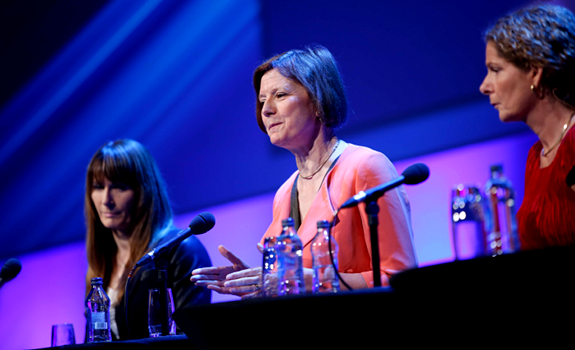
Helen Boaden (sitting in the middle) finds it important to keep focusing on great content (photo: Conor McCabe)
Give listeners valuable extras
The BBC agreed with commercial radio and government to fund the further rollout of local DAB, allowing commercial stations to cover 90% of the UK population, and will expand its own national DAB network to reach 97% by 2016. Boaden says to welcome plans of the British government to launch a second national DAB package for commercial radio, as “it will offer more choice to listeners”. But car conversion is a challenge. 20% of UK radio listening happens in cars – where young people get used to the habit of radio listening by listening along with their driving parents or grandparents. However, 90% of UK cars doesn’t include a digital radio. Even if 40% of new vehicles comes with one built in, it still means that a majority of 60% doesn’t. “We need a really serious initiative for cars – big retailers and garages offering cheap and easy conversion to low-cost digital radios when you take your car in for its annual safety check.”
Unite all radio stakeholders
Another issue is the date for digital switchover. In the UK it will happen when 50% of all listening is done via DAB and when there are enough digital radios in cars. Helen Boaden suggests that in any country, media need to keep their listeners with them on plans for switchover. “Broadcasters, government and the supply chain all have to work together to maintain digital momentum. We have to earn the right for switchover. We can’t force it on our listeners.”
Expand successful radio brands
“Digital innovation is essential to keep radio relevant, but it is only half the story”, Boaden continues. “When choice proliferates and competition intensifies, high-quality, distinctive content will become even more important.” She thinks that it’s vital to build on the success of established stations, and to accentuate what makes your brands unique and do not be afraid to experiment. “You can’t sack your audience, but they can sack you. We need to treasure those audiences who love what we do now and whose radio habits are likely to change dramatically. We must keep the day-to-day excellence of our output, giving listeners a reason to keep their daily radio habit.” One of the ways to achieve this are events, such as the:
• BBC Radio 1 – Big Weekend
• BBC Radio 3 – BBC Proms
• BBC Radio 4 – Home Front
• BBC Radio 6 Music – 6 Music Festival
“The emotional power of good radio
is in its intimacy and warmth”
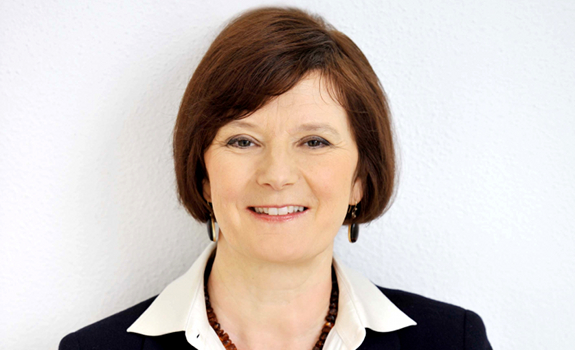
Personal communication is what makes radio stand out from the digital crowd, Helen Boaden says (photo: BBC)
Combine content and connection
“Distinctive radio requires great ideas and intuitive, knowledgeable and talented people, not just computer-generated playlists or algorithms”, she says. “Radio is essentially a relationship, with pleasure at its heart. It involves a degree of trust as you join in that silly competition with your favorite deejay, are introduced to new music you’ve not tried before, or led into a discussion you hadn’t realized you cared about. We don’t have a one-to-one relationship with an aggregator or streamed music; we have a reaction.” Helen Boaden adds that in a world of infinite online choice, radio can focus on content curation, brilliant programming and exceptional rapport between presenters and listeners. “The emotional power of good radio – the reason why it’s remained so resilient – is in its intrinsic qualities of intimacy and warmth; its natural ability to be in a one-to-one relationship with its audience.”
“Radio is essentially a relationship,
with pleasure at its heart.”
 Lead by constant innovation
Lead by constant innovation
The BBC radio director speaks of a “constant balancing act” between ambition and resources, as the BBC faces “testing efficiency targets” while their desire for digital innovation and distinctive content isn’t cheap. “The pain tends to be less if your staff and audiences believe you have a clear and bold vision for the future.” Boaden wants to keep investing in digital and distinctiveness, even if some experiments may fail. “The important point is that we try.”

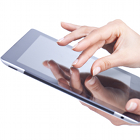
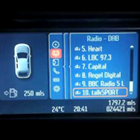




Add Your Comment